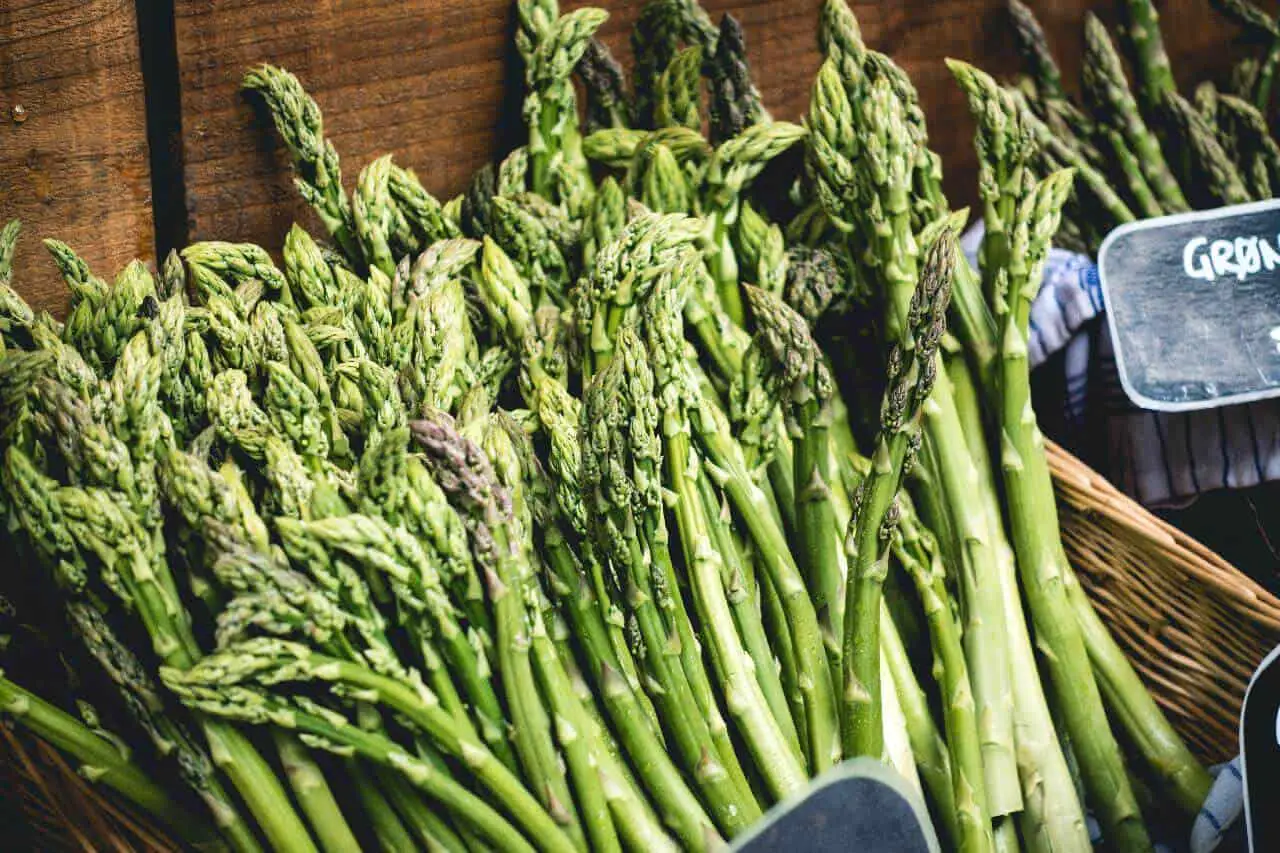Contents
Asparagus, aka garden asparagus with the scientific name Asparagus officinalis, is a commonly eaten vegetable that’s available in many stores across Europe, America, and Asia.
In this article, I’ll explain how you can grow the vegetable from cuttings and why it is better than growing from seeds but first, let’s get into the basics of Asparagus plants.

Asparagus Basics
Description: The Asparagus plant is a tall succulent that can grow up to 60 in. (150 cm) in height. It has sturdy stems and feathery branched foliage. Its leaves grow in clusters like that of rose petals. These leaves also grow to lengths between 6 mm and 32 mm and usually have a width of 1 mm.
Growth Rate: Asparagus grows rather slowly in comparison with other vegetables. This is why it is highly advised to grow them from cuttings rather than seeds, to have a somewhat faster harvest.
Sunlight: Asparagus grows favorably under partial to full exposure to sunlight.
Planting location: Cuttings can be planted in either containers or raised garden beds. However, planting them within a tight space negatively affects its lifespan as it’ll be shortened greatly. Those planted in raised garden beds can live for up to twenty years compared to the three years you’ll get from those planted in a container.
Planting Season: Cuttings are best planted between March and April when the temperature is lower than 64℉.
Planting Soil: Asparagus cuttings are best planted in fertile, well-draining soils because soils that get waterlogged cause their roots to rot.
Method of Propagation: Asparagus is easily propagated through its seeds or cuttings from its crown.
Harvest Period: It takes cuttings about three to four years to fully mature. When they do finally mature, the harvest period lasts about four to six weeks.
Ideal planting pH levels: Although Asparagus grows in acidic soil, it doesn’t do too well in highly acidic soils. Hence a pH ranging between 6.5 and 7.0 will suffice.
USDA Hardiness Zones: Asparagus cuttings can grow in zones 4, 5, 6, 7, 8, and 9. This makes it a somewhat versatile plant.
Good to Read : How To Split Asparagus
Growing Asparagus from Cuttings
To grow asparagus from cuttings, you should know that it usually involves dividing the plant’s root. These divisions are termed cuttings and have now become individual plants to be planted. You could choose to plant them in a container indoors or a raised garden bed outdoors.
Planting Asparagus Cuttings in a Container Indoors
Choosing to grow Asparagus cuttings indoors limits their lifespan but it’s the best way to go about it when you don’t have the outdoor space that’s needed.
To plant them indoors, you’ll need a spacious plastic container or any other type you’ve got that’s at least 20 in. deep and 20 in. wide in diameter as the roots will require a lot of space as they develop. Make drainage holes at the bottom of the container so there’ll no standing water left in the container else the roots of the cuttings will begin to rot.
Next, put two inches of gravel in the container to further decrease the chances of the roots getting wet while providing better drainage to reduce the risk of your plant breeding harmful fungi.
Fill the container with a potting soil mix having compost, peat moss, perlite, and other ingredients mixed in the right quantity to provide an optimal growing environment for your plant. Finally, plant your cuttings and water them regularly. Soon, you’ll notice your cuttings begin to mature.
Planting Asparagus Cuttings Outdoors

To plant Asparagus from its cuttings outdoors, you’ll first have to prep your soil for planting. This is done by digging a 20 in. wide by 12 in. deep trench. Once the trench has been dug, it’s time to fill it up. Pour in a layer of compost that’s been mixed with phosphorus micronutrient. Bonide’s Phosphorus Plant Food Granules is a recommended option. After this has been done, plant your cuttings ensuring that the roots are being spread atop the compost. Now cover the roots with the soil mix that’s made up of three parts soil to one part compost. Alternatively, you could fill the trench with the soil mix first, then plant your cuttings in it.
During the fall season, it is good practice to mulch the Asparagus rows as it keeps the soil moist and stops weeds from growing while protecting the Asparagus roots. Typically, your mulch should be nitrogen-rich. Materials such as seaweed, compost, and manure are great mulching options.
Frequently Asked Questions (FAQs)
Can I Plant Asparagus Cuttings during Frost?
The answer to this is no. You have to make sure that the frost has passed before you plant asparagus cuttings. Instead of planting during the frost, plant them during spring. Asparagus cuttings will grow faster during the warmer weather spring provides. Also, its roots won’t rot unless you water them excessively.
Can I Harvest my Asparagus after the First Year?
Yes, you can but you have to ensure that you don’t overharvest them. Only collect what you need for two to three weeks then wait till the second year when you can harvest for four months. Finally, in the third year, you can harvest for six weeks.
How do I maintain an Asparagus Patch?
This is very easy to do. As long as you maintain the plants by weeding, watering, and mulching, your asparagus patch will perform well. The farther apart you space Asparagus, the higher their chances of survival.
Keeping your asparagus garden doesn’t have to be difficult if you know what to do and how to maintain it. If you follow the steps listed above, you should reap a bountiful harvest in the years to come.
Want to know more about gardening ?
Fill in your email address in the form below and you'll receive all the latest updates directly in your in-box.
Thank you for subscribing.
Something went wrong.